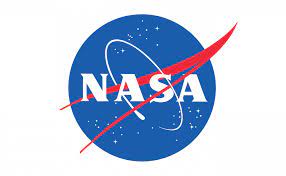It’s a Bird…It’s a Plane…It’s NASA’s Inflatable Heat Shield?

December 12, 2022
On Nov. 10 at 4:49 a.m. EST, a United Launch Alliance Atlas V rocket carrying the Joint Polar Satellite System (JPSS)-2 and LOFTID took off from Vandenberg Space Force Base in California.
Nov. 10 marks NASA’s third successful launch in a series of polar-orbiting weather satellite missions for the National Oceanic and Atmospheric Administration (NOAA). But this most recent launch also carried the Low-Earth Orbit Flight Test of an Inflatable Decelerator mission or LOFTID for short.
The LOFTID mission is a test for a new type of technology designed to protect a payload from the intense heat of atmospheric entry while giving the craft more time to slow down. Essentially, how it works is the layers of fabric that make up the decelerator are folded into a 1.5×4 foot cylindrical container that sits at the tip of the spacecraft. When the craft begins its re-entry into the atmosphere, the decelerator is quickly deployed and inflated. After inflation, the decelerator resembles a more traditional cone-shaped heat shield, only larger. The inflatable structure of the decelerator is made up of a set of pressurized concentric rings. The rings are made out of braided synthetic fibers that are 10 times stronger than steel, by weight. The rings are insulated by a flexible thermal protection system that can withstand temperatures exceeding 2900°F (1600°C). In the end, the heat shield blows up to an impressive 20-foot diameter. This increased surface area makes for faster and longer deceleration because of the added air friction. The additional drag makes it possible for significantly heavier payloads to re-enter an atmosphere. The LOFTID mission is an important piece in the puzzle that is getting mankind to Mars, and the success of the mission means we are one step closer to that goal.
But just how close are we? To get a sense of what people at Friends thought, some faculty and students were asked how long they thought it would be till Mankind got to mars. Devin Wallace ’24 responded, “probably within 10 years at most.” Matt Cauchy, an US physics teacher, said “I think it’s a little ways out.”
Despite former president Donald Trump’s signing of the National Aeronautics and Space Administration Transition Authorization Act of 2017 which set the aggressive goal of getting people on Mars by 2033, analysts and NASA officials predict that we won’t have people on Mars till the late 2030s to early 2040s.
Even with a significant uptick in spending and budget over the past two decades, NASA isn’t getting nearly the same amount of financial support that it did during the glory days of the space race that stretched from the mid-1950s into the 70s. So should NASA be receiving more funding? Jenks Whittenburg, The Upper School computer science teacher, said “yes, I think with the funding it takes a lot of PR. You have to convince people it’s worth putting money into. So if we have a lot of successes in that realm it will draw a lot of attention to space exploration and people would be more willing to allocate the funds necessary.” Cauchy responded, “well, we also have all kinds of terrestrial needs as well, so that tension between spending billions of dollars on space as oppose to spending it on all kinds of equity issues… there’s a lot of issues on earth, so I have mixed emotions about that.” Whittenburg and Cauchy both bring up important points. On one hand, with more successful missions like LOFTID, NASA will be able to garner more support and funds which could lead to discoveries that help mankind with its current problems. On the other hand, mankind and earth have very pressing issues that need to be dealt with quickly if either is to survive in the long run.
NASA isn’t the only space program looking to push its agenda forward. Other organizations like United Launch Alliance and Space X have become more and more successful and relevant in the past few decades. When asked if he thought these companies had re-kindled interest in space exploration, Devin Wallace ’24 said, “For sure, because NASA isn’t commercial, and those companies are commercial so they can get enough money to do multiple test runs, whereas with a lot of NASA’s projects, you test it once and it either works or it doesn’t. I think space X has had something like 15 different tests for just one spacecraft and having competition always helps drive innovation.” As it stands, it seems like space exploration isn’t going anywhere soon. LOFTID is just one of many new and exciting missions to come in the near future, so make sure to look up into the sky every once in a while. You might see someone heading off to Mars!






























